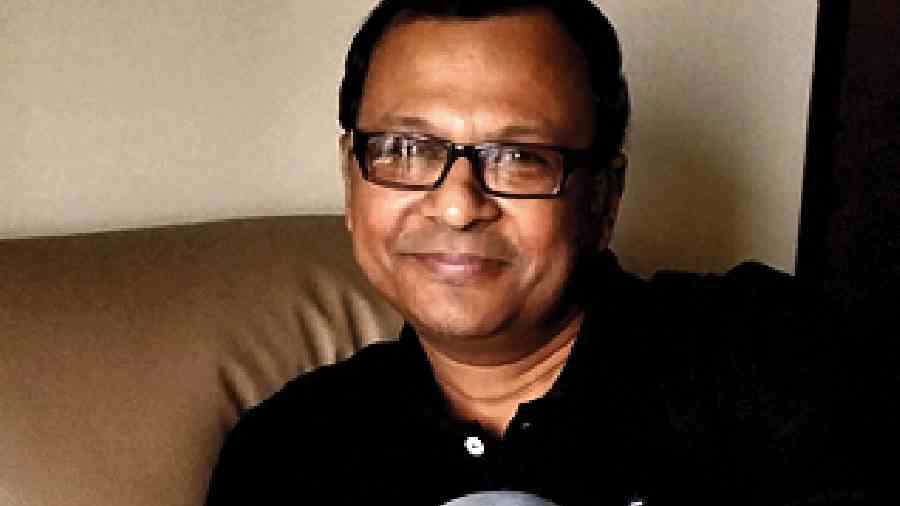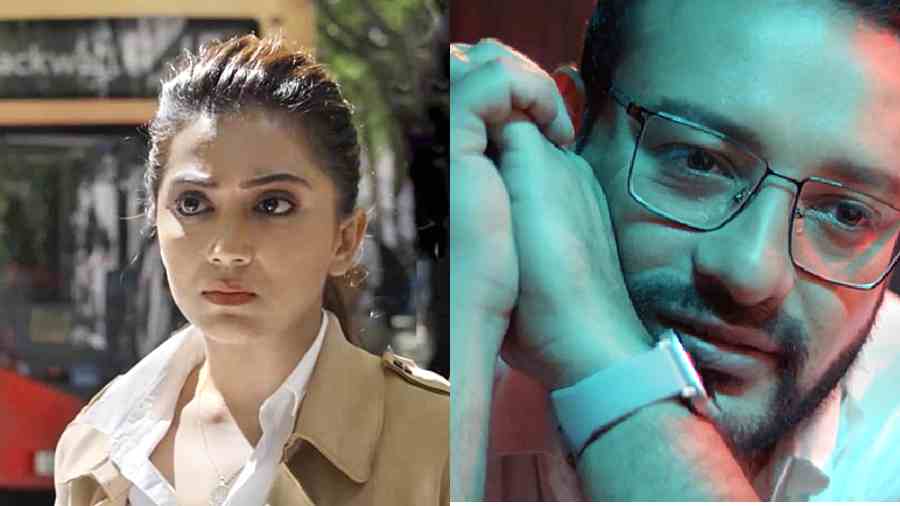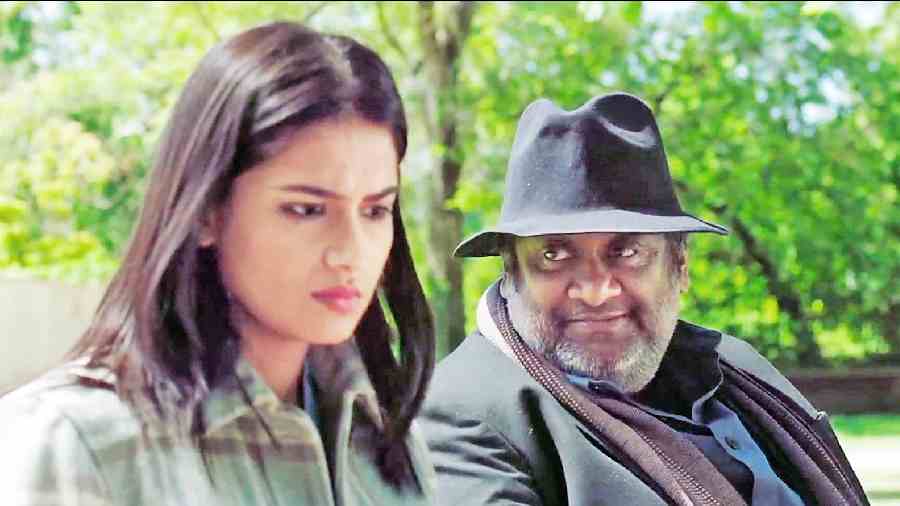Atanu Ghosh’s film Aaro Ek Prithibi, which releases today, is a tale of people who are on the run throughout their lives, desperately seeking a place to settle down, and longing to live peacefully and securely. It follows the journey of Pratiksha (played by Tasnia Farin), a young girl who desperately seeks shelter that has eluded her since she was 11. Her journey of finding herself a home brings her to London and thereafter a number of different worlds appear before her in her journey for survival. The Telegraph chat with Atanu...

Atanu Ghosh
How do you define the concept of home in your film?
There is a different concept of home for each of the four protagonists. For Pratiksha (Tasnia Farin), it’s a dream she’s nurtured since she was 11. She believes that home is where the heart is. It is true that the location of your heart, as well as the rest of your body, affects who you are. Therefore, she carries a sense of restlessness and a desire to settle down with loved ones throughout her life. Aritro’s (Shaheb Bhattacherjee) perception of home is influenced by economic and personal factors. Attempting to fit in with the generalised western expectation that ownership of a home means getting a bank mortgage, buying a house and jumping through all the hoops that come with arranging for your share of the amount! As for Ayesha (Anindita Bose), it’s like trying to find money to pay her house rent. Interestingly, Srikanto (Kaushik Ganguly) sees leaving home as an opportunity for change. With change comes the excitement of a new adventure, as well as the scope to discover what is unknown and unfamiliar.
The film begins and ends with shots of the wide-open skies signifying freedom. Why did you decide to go with these scenes?
I consider the opening and closing scenes of a film to be key moments. Aaro Ek Prithibi begins with a tilt down from the sky and ends up gazing at the skies. We live under the skies in a modern, rootless world. There is a misty, elusive quality to the very concept of home today. The vast majority of us are migrants, living out of suitcases, cars, boats, and moving desperately in flights or tubes back to a home that no longer exists as the ultimate abode of belonging.
The film follows the journey of Pratiksha, a girl who desperately seeks shelter. How does her past inform her present?
In theory, it’s admirable to say “my past does not determine my present”, but in practice, it’s far from being true. Throughout her childhood, Pratiksha lived through many trials and tribulations that moulded her personality. Despite this, she also has some strong convictions and has taken responsibility for her life. Her life experiences have taught her to learn from them. She has a vision for her life. She does not let her past hold her back, and she uses her experience to drive her dreams. With time, she has become stronger, more tolerant, and more self-assured.
Why cast Tasnia as Pratiksha?
Pratiksha is a complex character on two counts. During the first half of the film, she is quite introverted and rarely expresses herself verbally. She conveys all her distress, fury, desire and desperation through her silent expressions and distinctly recognisable reactions. A radically different aspect of her persona is revealed in the later part of the film. It is a surprise but had to be handled so naturally and effortlessly that it came off as seamless and logical. Therefore, I needed an actress who could deal with such contrasting situations. After seeing some of Tasnia’s performances, I was impressed by her ability to not only interpret the script intelligently but also to have a deep understanding of it. To make the character even more authentic and vibrant, she can also add her own experiences and perceptions.
How was your experience directing Kaushik Ganguly?
It has been a long time since we planned to work together. The main reason it wasn’t happening was that I was hell-bent on casting him in an out-of-the-box and memorable role. Kaushik is an outstanding actor both for the quality of his craft and the spontaneity and intuition he brings to the role. Furthermore, it would be redundant to mention his deep understanding of life. But the fact that he is also a filmmaker doesn’t make it any different. A director’s role is always to direct actors, no matter who they are!
What would the two of you discuss when not shooting?
The two of us would chat endlessly, discussing all that was ruminating in this world — from sublime to ridiculous! One of the most valuable takeaways from this shoot was those interactions.
While scouting for locations, and shooting, how did London open up to you?
Location hunting allowed me to rediscover the grand old city! I’ve been to London quite a few times before, but this time it was like a voyager’s journey of discovery. I received numerous videos of prospective locations and had an online chat with the location manager before visiting. After reaching there, we travelled incessantly for seven or eight days. We all know about London’s iconic attractions, major museums, and world-class restaurants. Our preference was to seek out hidden gems off the beaten path. So we explored obscure canals, low-income households, surreal streets, underneath bridges, and deep underground. That’s how we discovered quirky facts and lesser-known titbits that you won’t find in a guidebook.
After its meditations on life, Aaro Ek Prithibi turns into a film noir. Why did you decide to go that way?
The storyline dictated the form. We had to delve into the politics of the city, the vice and violence therein. The treatment of the concept required frequent use of flashbacks to carry forward an intricate plot structure, which is one of the prime characteristics of the noir genre. Besides, we also have to deal with some of the most pressing modern problems of urban existence, intense tensions, and criminal behaviour. Finally, it also resonates with Srikanto’s streak of bohemianism that explores questions related to the meaning, purpose, and value of human life.

(L-R) Anindita Bose, Shaheb Bhattacherjee
Film noirs are often morally ambiguous and driven by the guiding perspective of the protagonist. What kind of themes did you want to explore through this genre?
The emotional and financial struggle of existence in foreign lands, as faced by migrants who are sensitive and driven by some purpose in life.
The film also sheds light on how violence permeates modern lives. How did you want to depict that in your film?
In today’s world, violence plays an enormous role, and our minds can never be entirely free from it. It is similar to our acceptance of war. Violence is constantly reported, whether it’s in our neighbourhood, on the Internet or on the local news. You are not safe from violent external actions even if you live in a sheltered and secure environment. Further, violence is alarming because everyone is not adequately equipped mentally and psychologically to handle it. Ultimately, our minds are slaves to our own perceptions, demands, and desires. Each force that unexpectedly disrupts that state of equilibrium leaves us in a state of utter shock and disorientation. Our lives can be forever changed by the conflict that results therefrom. Aaro Ek Prithibi sheds some light on these issues.
How was it like working with Anindita and Shaheb?
Working with them was an absolute pleasure. They are both powerful performers. Anindita has an inherent passion for spontaneous performance, and she has the charm and confidence to portray the character convincingly while working on deeper layers, hues, and shades. Shaheb is quite skilled and balanced at conveying an individual’s emotional state, motivation, and intention through subtle expressions and physicality. Also, I am indebted to Shaheb for devising and executing all his physical tussles in Aaro Ek Prithibi so brilliantly with his co-actor Lee from Korea.











